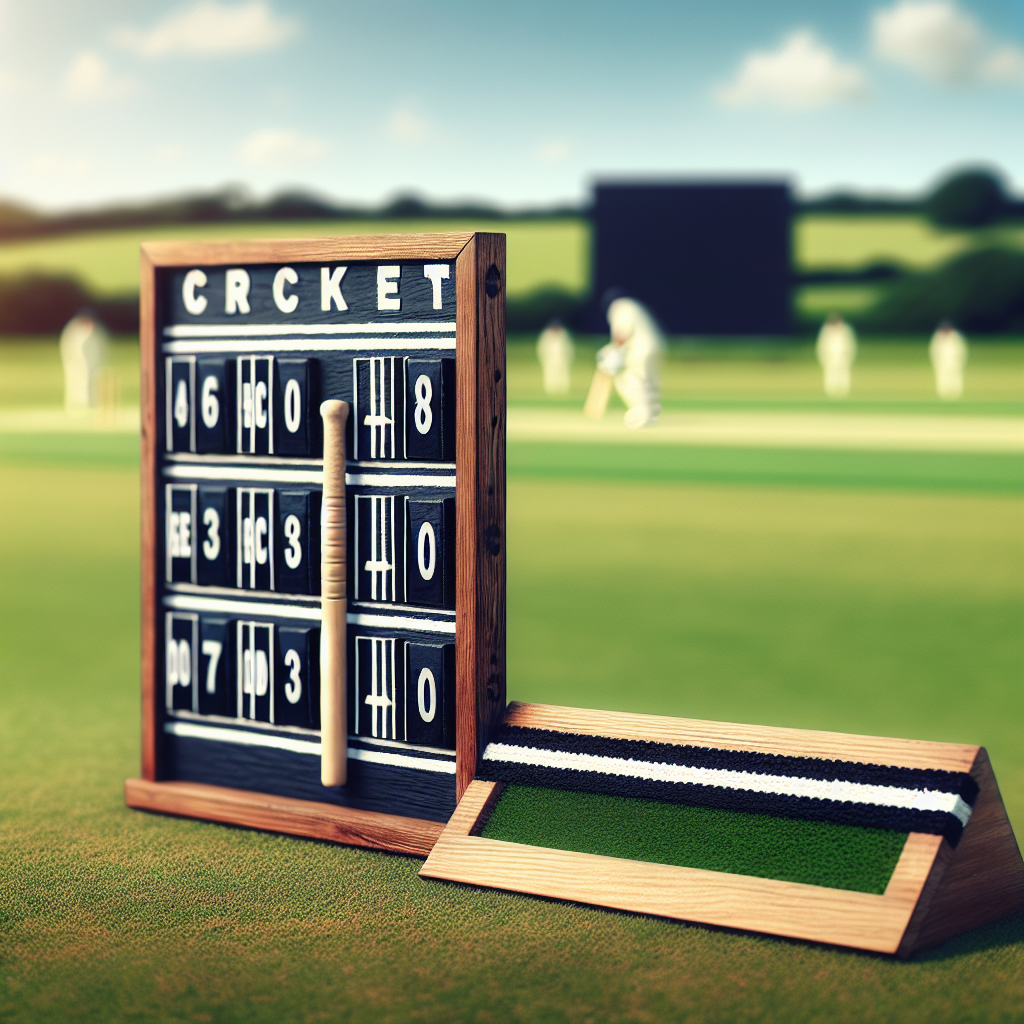
Cricket, often referred to as a gentleman's game, is a sport that has captivated millions around the world. One of the most intriguing aspects of cricket is its scoring system, which can be complex for newcomers. This article aims to demystify the concept of cricket score, providing a detailed exploration of how scores are calculated, the significance of different scoring methods, and the impact of scores on the outcome of matches.
The Basics of Cricket Scoring
Cricket scoring is a unique aspect of the game that involves a combination of runs, wickets, and overs. Understanding these elements is crucial for anyone looking to grasp the intricacies of the sport.
Runs: The Building Blocks of Cricket Score
Runs are the primary unit of scoring in cricket. They are scored when batsmen successfully run between the wickets after hitting the ball. The number of runs scored can vary based on how far the ball is hit and the speed of the batsmen.
- Single Run: When batsmen run from one end of the pitch to the other.
- Boundary: A ball that crosses the boundary line scores four runs if it touches the ground before crossing, and six runs if it crosses without touching the ground.
- Extras: Additional runs awarded due to errors by the fielding team, such as no-balls, wides, byes, and leg-byes.
Wickets: The Game Changer
Wickets are a critical component of cricket scoring. A team’s innings ends when ten of its batsmen are out, or when a predetermined number of overs have been bowled. The fall of wickets can significantly influence the momentum of a match.
- Bowled: When the ball hits the stumps and dislodges the bails.
- LBW (Leg Before Wicket): When a batsman is out because the ball hits their leg in line with the stumps.
- Caught: When a fielder catches the ball on the full after the batsman hits it.
Overs: The Framework of the Game
An over consists of six legal deliveries bowled by a bowler. The number of overs in a match varies depending on the format, with Test matches having unlimited overs, One Day Internationals (ODIs) having 50 overs per side, and Twenty20 (T20) matches having 20 overs per side.
The Significance of Cricket Score
The score in cricket is not just a reflection of runs and wickets; it is a narrative of the match's progression. It provides insights into the strategies employed by teams and the performance of individual players.
Strategic Implications
Cricket scores influence the strategies teams adopt during a match. A high score can put pressure on the opposing team, forcing them to take risks. Conversely, a low score can encourage defensive play.
- Chasing Strategy: Teams batting second often adjust their approach based on the target score.
- Bowling Strategy: A team with a low score may focus on aggressive bowling to take early wickets.
Player Performance Metrics
Individual scores are crucial for assessing player performance. Batsmen aim for high scores to establish their dominance, while bowlers strive to take wickets and maintain a low economy rate.
- Batting Average: Total runs scored divided by the number of times a batsman has been out.
- Bowling Average: Total runs conceded divided by the number of wickets taken.
Case Studies: Memorable Cricket Scores
Throughout cricket history, there have been numerous matches where scores have played a pivotal role in the outcome. Here are a few notable examples:
The 2005 Ashes Series
The 2005 Ashes series between England and Australia is often cited as one of the greatest Test series of all time. England's narrow two-run victory in the second Test at Edgbaston was a testament to the importance of every run and wicket.
India vs. Australia, 2001 Kolkata Test
In this iconic Test match, India overcame a follow-on to secure a historic victory against Australia. VVS Laxman's 281 and Rahul Dravid's 180 were instrumental in setting a formidable target, showcasing the impact of individual scores on the match's outcome.
South Africa vs. Australia, 2006 ODI
This match is remembered for South Africa's record-breaking chase of 434 runs, the highest successful run chase in ODI history at the time. Herschelle Gibbs' explosive 175 was a key factor in achieving this feat.
Statistics: The Language of Cricket
Cricket is a sport rich in statistics, which provide a deeper understanding of the game. Here are some key statistics that highlight the significance of cricket scores:
- Highest Individual Score in Test Cricket: Brian Lara's 400 not out against England in 2004.
- Highest Team Score in ODI Cricket: England's 498/4 against the Netherlands in 2022.
- Most Wickets in Test Cricket: Muttiah Muralitharan with 800 wickets.
Conclusion: The Art and Science of Cricket Scoring
Cricket scoring is both an art and a science, requiring a deep understanding of the game's nuances. From the basic elements of runs, wickets, and overs to the strategic implications and historical case studies, cricket scores tell the story of the game. They reflect the strategies employed by teams, the performance of individual players, and the thrilling unpredictability that makes cricket a beloved sport worldwide.
As fans and players continue to engage with cricket, the significance of scores will remain a central aspect of the game, shaping its narrative and influencing its outcomes. Whether you're a seasoned cricket enthusiast or a newcomer to the sport, understanding cricket scores is essential to appreciating the beauty and complexity of this timeless game.

